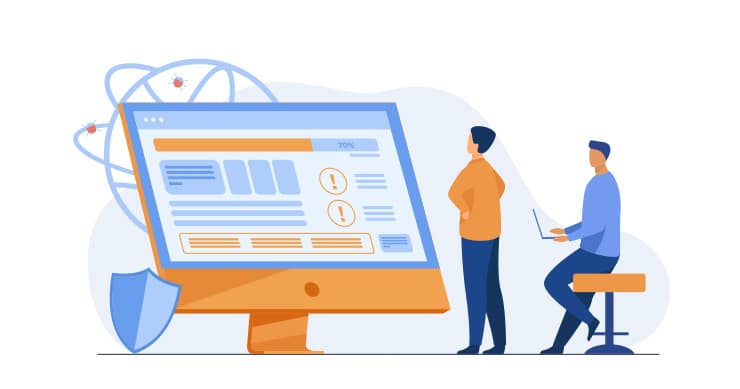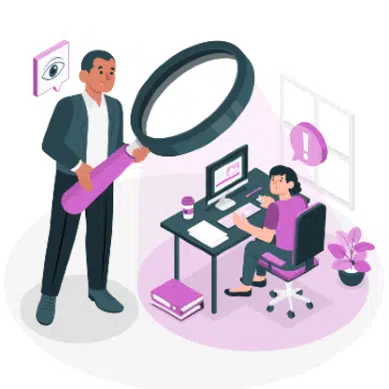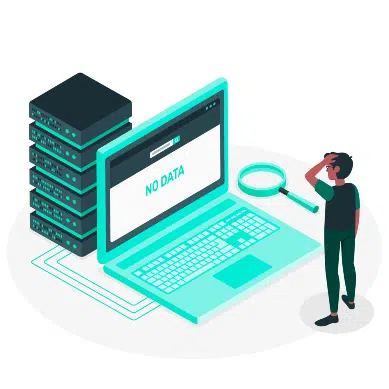Maintaining compliance isn’t just about avoiding fines — it’s about following frameworks designed to keep your company’s data and systems secure both today and over the long-term.
Security assurance is an umbrella term that involves a collection of processes focused on protecting an organization’s data and systems against an attack. These processes also tend to correspond with compliance frameworks and regulations.
As a result, compliance evidence collection proves your organization’s commitment to security practices and provides security assurance to partners and customers that their data is safe in your hands.
Proper evidence collection may also reveal gaps in your current security practices that can be corrected before a compliance audit. For example, one study found that 17% of all sensitive files are accessible to all employees. That’s a problem; all it takes is one weak password or one successful social engineering attack for a malicious actor to access sensitive data.
Today, we’ll identify critical challenges with modern evidence collection and discuss some potent best practices to help your organization gather and store the evidence necessary to remain secure and compliant.

Challenges Inherent to Modern Evidence Collection
Today, businesses across most industries collect large amounts of data about their customers and integrate their systems with a web of vendors, suppliers, and cloud-based systems. This interconnectedness has given rise to laws and regulations about data management and security, which have created security assurance frameworks: ISO 27001, NIST, PCI DSS, SOC2, HITRUST, and many more.
Spreadsheets are no longer sufficient for evidence gathering techniques in auditing preparation. Along with other legacy governance, risk, and compliance evidence gathering techniques, manually collecting the troves of information necessary to prove compliance isn’t feasible.
For instance, some data needs to be “fresh,” meaning it’s collected frequently and demonstrates the status of a particular system at that precise moment. Imagine loading up a spreadsheet to capture data from a cloud backup system every day before leaving the office; it’s simply not practical.
Learning best practices for compliance evidence collection for security assurance will help your organization reduce the headaches involved with audit preparation and uncover any security vulnerabilities before a malicious actor does.
Identify Evidence that Applies to Multiple Frameworks and Regulations
Controls are any type of process, procedure, or solution put in place to mitigate risks and satisfy compliance requirements. It’s expected that two or more frameworks have requirements that need the same evidence, meaning one control will produce evidence for more than one framework.
Smart mapping these controls to produce evidence that applies to multiple frameworks can save significant amounts of time. Sometimes called crosswalks, your compliance tool should identify these overlapping requirements and map them to the same control. As a result, smart mapping will reduce the amount of time spent on evidence collection and implementing new controls to meet safety assurance requirements.
Types of evidence that are requested throughout multiple frameworks include:
- Privacy policies
- Access controls
- Security policies
- Data retention and classification policies
- Business continuity plans
- Incident response procedures
- Change management tickets
Start Getting Value With
Centraleyes for Free
See for yourself how the Centraleyes platform exceeds anything an old GRC
system does and eliminates the need for manual processes and spreadsheets
to give you immediate value and run a full risk assessment in less than 30 days
Automate Evidence Collection with APIs
Automated evidence collection is your best friend for capturing and tagging data that auditors need. Many types of evidence need to be collected as snapshots of a data protection system, complete with timestamps and other relevant metadata.
Fortunately, many networking and cloud-based tools available today have APIs to help automate collecting evidence. For example, you may need to capture encryption settings of high-risk data, code changes, or backup processes. Vendors like AWS, GitHub, and Google Cloud provide APIs for compliance automation so that required evidence is automatically captured and stored, all without human intervention.
Be aware that you’ll also need a system that triggers alerts if an automated process fails. You still need that evidence, so make sure a system administrator is notified that the process didn’t go through and requires investigation.
Securely Store Evidence with Custom Roles and Permissions
Compliance evidence management is equally as important as collection. All evidence must be stored securely with restricted access so that it’s only accessible to those who need it.
Many organizations depend on third-party platforms, such as AWS cloud storage or similar solutions, to store compliance evidence. Therefore, it’s imperative that you fully understand the vendor’s security policies and processes. If an attacker gains access to your compliance evidence by exploiting the storage vendor, that’s still your responsibility. Customers and auditors won’t let you pass the responsibility to the vendor.
Remember our statistic at the beginning that 17% of sensitive data is accessible by every employee? Don’t make that mistake with your compliance evidence data. This evidence contains critical information about your organization and its processes; don’t let it fall into the wrong hands.
Why You Need a Trusted Compliance Partner
Evidence collection is the backbone of maintaining compliance. You should be able to hand collected evidence over to an auditor who can then verify that your organization has met all applicable requirements.
Unfortunately, manually collecting all of this data is impractical, and there’s no need to reinvent the wheel by developing in-house automated solutions. Instead, your enterprise can work with a trusted and reputable partner to automate evidence collection so that you’re prepared for audits.
Centraleyes helps organizations across a multitude of industries gather the necessary data to keep auditors happy and uncover any issues before the auditor arrives. Schedule a demo of our cutting-edge solution today to discover how Centraleyes can simplify (and automate) evidence collection for your business.
Start Getting Value With
Centraleyes for Free
See for yourself how the Centraleyes platform exceeds anything an old GRC
system does and eliminates the need for manual processes and spreadsheets
to give you immediate value and run a full risk assessment in less than 30 days





